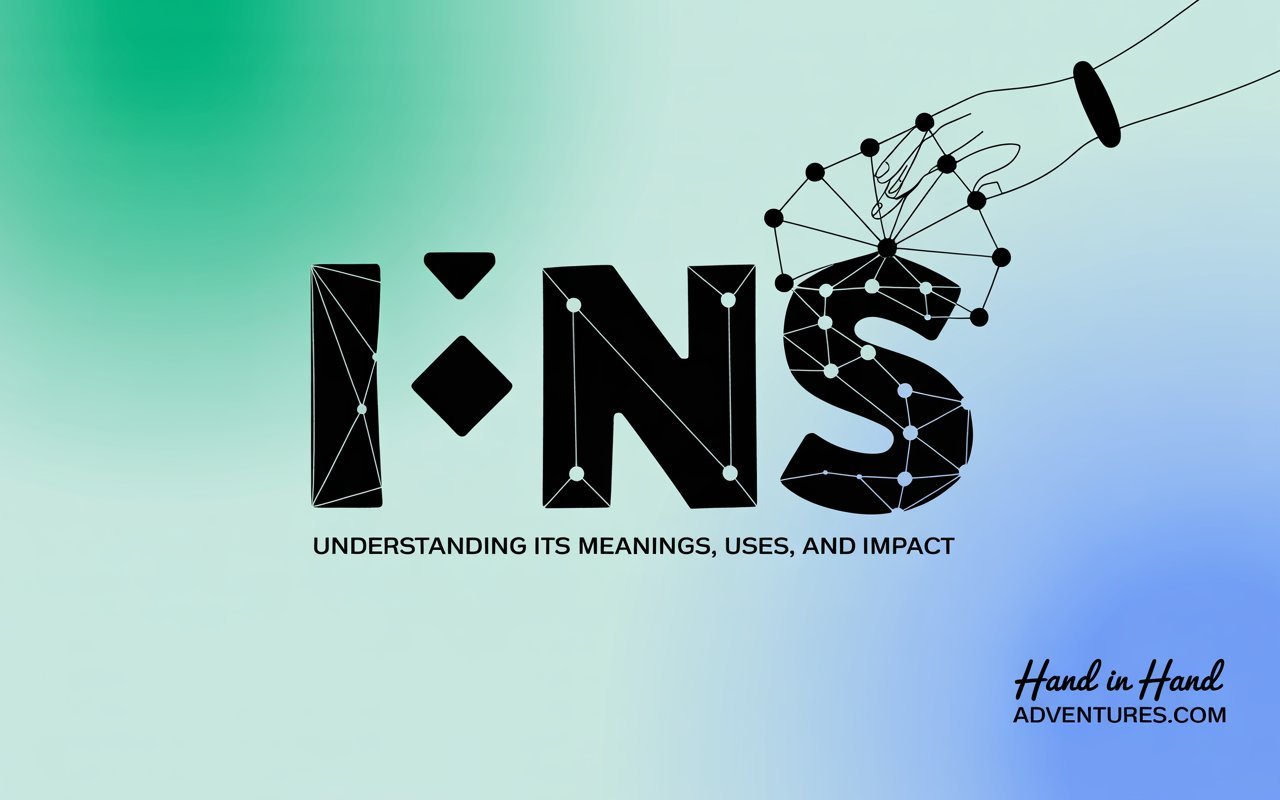i̇ns may appear as a simple string of letters, yet it carries potential for multiple interpretations across fields. In this article, the concept of i̇ns is explored thoroughly: its linguistic roots, cultural contexts, technological associations, psychological metaphors, and future possibilities. While ambiguity surrounds i̇ns, its versatile nature invites inquiry and reflection.
Origins and Linguistic Roots of i̇ns
The sequence “i̇ns” can be traced to several linguistic sources. In languages using the dotless “i,” such as Turkish, the dotted “i̇” signals a distinct letter — thus i̇ns gains specificity. Some scholars propose that i̇ns stems from a root meaning “connection” or “inside,” used in archaic scripts. Over time, the term faded, but in modern times it has been revived in digital art, stylized names, and symbolic usage. Because no single etymology is confirmed, multiple origin paths coexist.
i̇ns in Turkish and Related Alphabets
In Turkish orthography, the dotted i̇ is distinct from the dotless ı. Thus i̇ns is not equivalent to “ins” in English. When used in Turkish words, i̇ marks vowel quality and pronunciation. When adopted in stylized branding or creative scripts, i̇ns evokes a blend of linguistic play and identity. In this context, i̇ns may be used as a name, a brand, or a symbolic marker, emphasizing cultural specificity and visual distinctiveness.
Symbolic Interpretations of i̇ns
Because i̇ns lacks a fixed dictionary definition, symbolism plays a major role. It is often regarded as a marker of transition, an entry point, or a boundary between inner and outer realms. In poetic usage, i̇ns may symbolize threshold states: between thought and expression, consciousness and unconsciousness, or self and other. Furthermore, the presence of the dotted character hints at attention to detail, visibility, and emphasis. Thus i̇ns becomes a subtle symbol of nuance.
Technological and Digital Contexts for i̇ns
In digital domains, i̇ns might appear as a username, tag, or code token. It can signify “inside networking system,” “interface node service,” or simply be a stylized brand. Designers may use i̇ns in domain names, logos, or software identifiers to evoke minimalism and mystery. Likewise, in programming contexts, i̇ns might be employed as a variable name or module prefix, chosen because of its brevity and uniqueness. The ambiguity of i̇ns affords creative freedom.
Psychological and Metaphorical Dimensions
Psychologically, i̇ns can be used as a metaphor for inner spaces or introspection. It may represent “inner narratives and selfhood.” In therapeutic or contemplative work, one might envision a private chamber labeled i̇ns, housing thoughts and hidden feelings. Thus i̇ns becomes a symbolic container. Moreover, transitions through i̇ns may represent personal growth: moving from surface-level awareness into deeper insight, or from confusion into clarity.
Cultural Adaptations and Naming Uses
Across art, music, and literature, i̇ns has been adopted as a title, pseudonym, or motif. Some experimental musicians name tracks “i̇ns” to evoke minimal, introspective soundscapes. Visual artists use i̇ns as a motif to signal absence, presence, or threshold. In poetry, a line ending in i̇ns may suggest fragmentation or openness. In branding, i̇ns may signal exclusivity or enigmatic identity. Because of its brevity and visual distinctiveness, i̇ns works well in creative naming.
Contrast with “ins” and Other Variants
It is essential to distinguish i̇ns from “ins” (without the dotted i). In English, “ins” may imply “inside,” “insiders,” or plural of “in.” But i̇ns carries a separate visual and phonetic identity in languages using dotted and dotless i. In stylized texts or foreign-language contexts, i̇ns is treated as a unique token rather than a variation of “ins.” This distinction is critical when interpreting meaning in multilingual or symbolic contexts.
Use Cases in Creative Projects
Artists and writers may embed i̇ns into works as a motif signaling liminality or inner zones. In interactive narratives, i̇ns could denote hidden levels, cryptic gateways, or inner sanctums. It may be deployed as a cipher, an anagram base, or a placeholder for unknown values. In multimedia art, i̇ns might appear in visual overlays, ambient sound labels, or minimal UI elements. Its ambiguity allows flexible integration into narrative structures.
Interpretive Challenges and Ambiguity
Because i̇ns carries no canonical meaning, interpretive challenges naturally arise. Different readers may assign vastly different values. Some may see it as a spiritual token, others as a brand signifier, still others as a code. This ambiguity may frustrate those seeking concrete definitions. However, ambiguity also encourages deeper engagement: readers must explore rather than accept. Thus i̇ns can become a mirror for personal meaning-making.
Linguistic Play and Typographic Appeal
Typographically, i̇ns offers visual intrigue. The dot over i̇ invites focus; the “ns” tail forms a subtle balance. Designers may accentuate the dot or play with kerning to evoke tension or harmony. In logos, i̇ns can be stylized with diacritics, color gradients, or negative space. Linguistically, i̇ns invites playful rearrangements (e.g., sin, nis, ins) to generate wordplay or cryptic poetry. Such play underscores its role as a creative prompt.
Including i̇ns in Philosophical Reflection
Philosophers might use i̇ns as a conceptual pivot: a minimal signifier for being, boundary, or threshold. It can stand for “internal non-surface” or “intention/insight nexus.” In discourses on identity, i̇ns may represent the minimal core beneath persona. Because it holds no explicit meaning, it encourages layers of interpretation. Philosophical essays might wrap around i̇ns, exploring its emptiness as generative space.
The Role of i̇ns in Semiotics
From a semiotic perspective, i̇ns is a signifier without a fixed signified. Its meaning emerges in relation to context, usage, and interpretation. In any text, i̇ns inherits meaning from surrounding symbols. Its openness allows variation in meaning across communities. Semiotic analysis would examine how i̇ns functions in different communicative systems: as a name, a cryptogram, a visual symbol, or a placeholder.
Psychological Exercises with i̇ns
Practitioners may invite reflection using i̇ns as a prompt. For example: “What resides in your i̇ns?” or “What threshold does your i̇ns guard?” Journaling on such prompts may reveal internal dynamics. In guided meditation, envision entering i̇ns as a chamber where unspoken thoughts dwell. Over time, insight may emerge through engagement with the symbol. Thus i̇ns becomes a tool for introspection and self-discovery.
Technology, AI, and i̇ns Applications
In AI systems or algorithms, i̇ns may be used as a placeholder token for unknown variables or hidden states. Within neural networks, a node or embedding might be labeled i̇ns to represent latent internal features. In blockchain or cryptographic spaces, i̇ns might function as a code prefix, namespace, or alias. Because of its brevity and uniqueness, i̇ns is appealing in contexts demanding compact, nonstandard identifiers.
Educational and Research Potential
In linguistics, i̇ns can be studied as a case of diacritical identity and visual semantics. Researchers might explore how such names influence perception across cultures. In semiotics or media studies, i̇ns serves as a living experiment in meaning generation. Educators could assign students to craft their own interpretive systems built around i̇ns, thereby teaching sign creation and analysis. Its minimal form makes it adaptable to pedagogical models.
Future Directions for i̇ns Usage
As digital culture evolves, i̇ns may gain traction in branding, virtual worlds, and cryptographic nomenclature. It could become a meme symbol, an ambient tag in VR spaces, or a minimalist identity marker. In literature, it may appear more frequently as a motif or title. Because i̇ns has no fixed semantics, it offers fertile ground for new symbolic systems. The future of i̇ns lies in how communities choose to invest meaning in it.
Integrating i̇ns into Personal Practice
If one wishes to internalize i̇ns, personal ritual or symbolism may be adopted. For instance, writing i̇ns at start of a journal page might mark an inner zone. Or placing i̇ns in a meditation space can serve as a focal symbol of threshold. Over time, one’s personal meaning may deepen. Because i̇ns is open-ended, it adapts to evolving inner landscapes rather than constraining them.
Case Study: A Short Fiction Featuring i̇ns
Consider a short speculative story in which a character discovers a doorway labeled i̇ns in a misty hallway. Crossing it, they confront memories and hidden motives. The label i̇ns remains unexplained, yet its presence drives narrative tension. Readers project their own meaning into it; some see it as entrance, others as exit, others as void. The flexibility of i̇ns enhances engagement and mirrors the theme of transition.
Critiques and Limitations of i̇ns Symbolism
While i̇ns offers creative openness, its vagueness can sometimes frustrate. Without shared meaning, readers may feel adrift. In texts, overuse of i̇ns may become a gimmick rather than substance. Moreover, because it lacks grounding, it may be dismissed in academic or technical contexts. To counter this, users should anchor i̇ns with contextual cues, consistent usage, and narrative or symbolic scaffolding.
Summary and Reflection on i̇ns
In summary, i̇ns stands as a minimalist symbol rich with possibility. Though its roots are obscure, its potential spans linguistics, art, psychology, digital culture, and philosophy. Its appeal lies in open interpretability and threshold symbolism. While vagueness can be a challenge, careful contextual framing allows i̇ns to serve as a creative prompt, symbolic anchor, or introspective interface.
Ultimately, i̇ns is not merely a string of letters. It is a space—an invitation into liminality, meaning-making, and transformation. Its shape may be simple, but its echoes can be profound.

